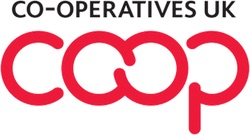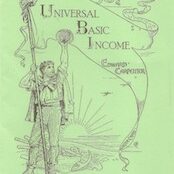BERNARD HUGHES provides a quick before-and-after survey of three areas of transport to help illustrate the marketisation issue
Let me start with some caveats. First, it deliberately takes no ideological position about the question of public ownership of the means of providing public services. It’s a strictly mechanical cui bono look at the results.
Secondly, why only these three areas? Well, marketisation is mostly concerned about the future of services that serve a social need. So I am looking at buses – in London and elsewhere – and railways. I am not including aviation, for while air services are now in the mass market, they are not comparable to issues such as social services. Shipping is economically important but doesn’t affect people’s lives in such a direct and obvious way. And private road transport – people going around in cars and on bikes – is much more complicated. London Underground is worse still and will probably be the subject of a future article.
And the third caveat. Bus and rail were privatised earlier than many other socially-necessary services, and the way that this was done was slightly different from the approach taken under Blair.
But these examples are still instructive. Marketisation isn’t a simple thing; there are different ways of doing it. What happened to transport in the past can help us to predict the effects on other services depending on how they are privatised, or marketised, or whatever it is called at the time.
The period I’m talking about is from 1985 – when transport was mostly publicly-owned and operated – to 2000, when Labour had been in power for three years, and the last pieces had been sold off.
| Now | London buses | Other buses | Railways |
| Went from | Uncertain | Privatised and deregulated | Franchises |
| To | Municipal franchises | Some regulation | Highly controlled arrangement |
| Users: price | Y/X | Much the same | X/Y |
| Users: quality | Y | Y | |
| Employees: wages | Y? | X/Y | |
| Employees: conditions | Y? | X/Y | |
| Taxpayer | XX | X | |
| Owner | ? | X |
Table 1
Buses
So taking the story of the bus network first: what happened, who won and who lost? Well, in 1985, buses were mostly municipally-owned monopolies. There were some private operators, but they were generally the smaller ones, but it went – mostly in one big bang in 1986 – to a wholly deregulated system. Bus companies sank or swam based on the profits they could make. There were some subsidised services, but not many.
From the point of view of the passengers, services mostly shrank. Where they grew, they often duplicated each other. Competition didn’t work.
This isn’t to decry competition. Sometimes competition does work – it works in aviation, and that’s why your holiday is so cheap. But on buses it had some perverse effects. For example, before deregulation, there was one bus per hour from Leeds to Sheffield. Afterwards, there were three, but they all left at about the same time and cost three times more. And operators tended to ‘sweat their assets’ – in this case, by keeping clapped-out old buses on the road rather than replacing them with new ones. So, the passengers definitely lost.
Employees also lost out very seriously. It is arguable that this was partly because the municipal companies were overstaffed but, as noted above, this is about what happened rather than the underlying causes. There were huge numbers of redundancies, and some vicious anti-union campaigns. Wages for bus workers fell and, while the pensions law for buses said that staff pensions had to be ‘broadly comparable’ with the pension schemes they had before, ‘broadly comparable’ often meant less than half as good in practice.
There were some winners. Buses used to be quite heavily subsidised, but now they received almost no subsidy at all so you spent less on taxes and rates (in those days) – or, more realistically, the cuts of the late 1980s were paid for in part by the falling bus subsidy.
As for the owners of bus companies – they actually had quite mixed fortunes. Stagecoach made a fortune by using predatory pricing to drive other companies out of business and create local monopolies. Other companies didn’t do too well, as they had to keep costs low, and they struggled.
Overall, it could look like Table 2.
Buses
| Went from | Mostly municipal and local – small private sector | |
| To | Deregulated with only small, privately-owned contract sector | |
| Users: | price | 2 |
| quality | 2 | |
| Employees: | wages | 2 |
| conditions | 2 | |
| Taxpayer | u | |
| Owners | u/2 |
Table 2
Railways
The privatisation of the railways was slightly different. They moved from a single nationalised company – almost no private rail operations at all – to a franchise system. Railways weren’t deregulated in the way that buses were. There was an acceptance that the level of service would need to continue, and so rather than just privatising the whole thing, the existing services were divided up and let on contracts. This is much more similar to the Blairite style of marketisation.
So what happened? Well, starting with the impact on passengers, fares went both ways. Some rose – such as long-distance peak hour services to and from London, while some commuter fares fell. It was quite a mixed picture.
But the picture is much simpler when we consider the quality of service. The decline in service was very obvious, and for a very simple reason. The franchised companies took the money from fares – but the amount they got depended on how much people needed the service, not how good it was. In practice, it got much worse for the same reason the buses did.
The impact on employees was unusually mixed. Pension schemes were mostly protected to the extent that rail workers stayed in the same pension fund – none of the ‘broadly comparable’ schemes that applied to bus workers – so this didn’t work out too badly for them. There were quite a lot redundancies, but in some areas this backfired as the employers overreached themselves.
They tried to cut staff so much that they created a scarcity. And because railway staff take a while to recruit and train (lots of safety training is needed) the staff in place were in a very good bargaining position. Plenty of engineering, maintenance and customer service staff did lose out. On the other hand, quite a lot of train drivers were able to negotiate huge pay rises as they found that they had been tuned into a scarce and valuable commodity. They have not lost out.
As for the taxpayer, the experience of railways provides a real lesson for the current process of marketisation. In essential services, when the service is privatised, there is a decision to try to maintain existing provision and not just throw it to the market. This tends to involve getting some expensive consultants like PriceWaterhouse to look at the cost of operating the service in the private sector.
In almost all such cases – I only say ‘almost’ because I haven’t actually found an exception, but one might just exist – the consultants have found the same thing. They have said that the service costs much more – often about three times more – to operate than was actually the case before.
How does this happen? Well, it’s not just an accounting trick. As far as anyone can tell, what public servants are very good at is cutting and trimming. So, after round after round of cuts, they can still run a functional service, they can still keep the service doing basically what it was intended to do. It may not be very good: after all, we all know public services which are pretty ropey.
But when it comes to making a comparison with how much it costs to do the job ‘properly’ and in the private sector, it can create a nasty shock once it’s clear how much it will actually cost.
But there was one winner. All the extra money from subsidy, all the money saved from cuts, the complete lack of any need to attract customers by investing in the service to make it better, to make it a service that people would actually want to use, meant that the owners of the railway companies took money away in extraordinary volumes.
Having said that, and even given that it would take a fairly spectacular level of incompetence for a company to lose money in such circumstances, Railtrack (the company running the track and signalling) somehow achieved it. But even so, the owners won.
In 2000/01, Railtrack – a company whose income was almost entirely derived from public subsidy, made a loss of £534 million. At the end of that year, the company distributed £137 million in dividends to its shareholders. This prompted even the Blairite Stephen Byers to lose patience and to bring the company into a form of public ownership.
Using the table applied to bus privatisation, things look like Table 3.
Railways
| Went from | Single nationalised company | |
| To | Franchised arrangement | |
| Users: | price | 2/u |
| quality | 2 | |
| Employees: | wages | 2/u |
| conditions | 2/u | |
| Taxpayer | 22 | |
| Owners | uuu |
Table 3
These tales of woe made good Tory-bashing copy a few years ago. But looking at the current situation, we need to consider what they tell us now.
One lesson is that the effects on the people concerned depend substantially on the way that a service is privatised, or marketised. It is important to remember that, while what happened to transport had features of marketisation about it, it’s not quite the same as what is being proposed now.
Indeed the Labour government has made some changes to the services. There is some municipal control of buses outside London. There is more central control of railways. And in London – although more due to Ken Livingstone than the government, it must be said – the approach to buses is different from Tory privatisations, but perhaps more like marketisation. In fact, the London example is the third area that is worth examining in some detail.
London buses
London buses have had a bit of a confused history in the last 20 years. The Tories’ original idea was to deregulate the system along with the rest of the country but, unusually, caution took over. Towards the end of the Major government, the operating company was broken up and privatised, although there was still a highly regulated system. A slow decline continued until Ken Livingstone became London’s mayor.
Livingstone didn’t restore the old system – he didn’t have the power to do so, even if he’d wanted to – but he reformed it to create a series of short contracts, with quality standards attached, and genuine competition for contracts. This competition was not just between private sector operators – one of his first moves was to take a bus contract back into public ownership because the contractors’ bids weren’t good enough.
From the passengers’ point of view there have been mixed results. Prices were reformed in a very broad-brush way and for most people they have gone down, but for some they have gone up – it’s a kind of postcode lottery gone crazy. Overall, London bus fares are very cheap by national standards, and the quality of service has certainly improved as new quality standards have forced operators to replace old fleets, and large numbers of extra buses have been introduced.
From the London bus workers’ point of view, things have recovered quite a lot after a real decline following the Tory privatisation. This is probably more to do with a general tightening-up of the labour market in London, which meant bus workers could demand better pay and conditions, than with a political decision to improve conditions. But it was still an improvement.
The taxpayer lost, however. Bus subsidy in London had nearly disappeared (except for concessionary fares) by the end of the Tory government, but rose to nearly £800 million in 2005 – mostly paid for by non-Londoners through national taxes.
And the bus companies didn’t have it all their own way, either. They made reasonable returns, but they faced real competition and real costs, rather than just being able to milk this public service as a cash cow.
So the balance of winners and losers looks like Table 4.
London buses
| Went from | Uncertain | |
| To | Tightly-controlled franchised arrangement with public sector competition | |
| Users: | price | u/2 |
| quality | u | |
| Employees: | wages | u? |
| conditions | u? | |
| Taxpayer | 22 | |
| Owners | ? |
Table 4
Target arguments
The business of procuring a public service through private sector suppliers and a pubic sector commissioning body – which is very much the theory behind marketisation – can deliver real benefits. But in this case, and others, only at a huge cost.
This analysis won’t be to some people’s taste. It looks only at the effects on the ground, and doesn’t consider wider questions, such as the public service ethic and democratic accountability.
But it does show that the impacts of marketisation and privatisation can differ substantially depending on how it is done. Some marketisations will damage services, some will ruin employees’ positions, some will be rotten value and will pour public money into private hands.
But not all will, and those that do will do so in different ways. By understanding the effects, we can target our arguments more effectively.


